Probably like most of you, I enjoy going to the range. I especially like going to the range when I have a new toy to play with. As I have had a chance to run the Ruger SR9 through its paces on a previous occasion, I now had a chance to provide a user review of the Ruger SR9c that I recently added to the stable. Up front, and like the Ruger SR9, I will tell you that if you should consider the Ruger SR9c as a home or personal defense firearm, it would be worth considering. Now, let me spend some of your time telling you why.
The Ruger SR9 started out on rocky footing. Ruger realized that there was a problem with a few of the SR9s early on, and that it could possibly lead to an accidental discharge if the pistol was dropped really hard with the safety in the “fire” position. Ruger immediately stopped production of the pistol, and recalled every SR9 that had been shipped at that point. Ruger redesigned the internals and the pistol was re-released. In 2010, Ruger introduced the SR9c, the “compact” little brother to the SR9. This gun won the 2010 Handgun of the Year from the Shooting Industry Academy of Excellence.
You can read about the Ruger SR9 @ http://en.wikipedia.org/wiki/Ruger_SR_series, and Jeff Quinn did a nice write-up @ http://www.gunblast.com/Ruger-SR9C.htm on the SR9c, but that still would not convince you to jump right out and buy one and I am not trying to convince you to do so either. What I will provide is an honest user’s impression of the SR9c and let you decide if it is worthy of your trust as a companion.
For a beginning, I will say that if you are not a fan of magazine disconnects, you may want to stop here because the Ruger SR9c, like its big brother the SR9, has one. As a former LEO, I can appreciate a magazine disconnect and it does have its use in the civilian world. I would hope that you continue reading, as I may convince you of its virtues.
If you like to dry-fire a pistol without the magazine inserted, you also may want to stop here. Although you can dry-fire the pistol without the magazine, Ruger does not recommend it as it may cause excessive wear to the striker block. I do not have a problem with it and have learned to insert an empty magazine if I feel the need to dry-fire.
I am glad that you chose to continue reading.
The first thing that you may notice about the pistol, should you pick one up, is the slimness of the grip. In fact, the slimness of the entire package is impressive. The grip, in fact, is slimmer than a few of the 1911-based pistols that I have. At 1.27 inches at the widest point (the frame-mounted safety lever), its surprising that it can hold 10+1 rounds of your favorite 9mm ammunition. The SR9c, with the exceptions of those states that disallow magazine capacities greater than 10-rounds, comes with a 17-round magazine that mates to the grip with a magazine sleeve.
The width of the pistol is just a hair wider than the Sig Sauer P239, which holds only 8-rounds of 9mm. That is saying something to Ruger’s commitment to capacity in a thin package. In addition, for comparison, the Glock G26 also holds 10 rounds with 17, 19, and 33 rounds as options – at the cost of some concealment. The SR9c is just slightly wider than the Glock G26 (1.18″), but seems thinner because of its design. The ambidextrous safety on the SR9c contributes to the overall width, but without the safety levers the SR9 is so close to the width of the G26 it would be to close to call (IMHO).
Ruger also accommodates shooters with different hand sizes (as if we all have the same hand size) and provides a rubber “strap” that is easily removed by pushing out a pin in the grip and sliding the strap downward until it is free of the grip. Turn it around; slide it into the grip, insert the pin, and you are ready to go. For my hands, I prefer the arched side. Some folks may like the flat side and the decision is yours.
At 23.4 ounces (unloaded), The SR9c is slightly greater in weight than the Glock G26 @ 21.71 ounces (unloaded), which is negligible in the grand scheme of compact pistols comparisons. The barrel length is 3.40 inches as compared to the 3.163.42 inch barrel length of the G26. That puts the SR9c squarely in the “compact” league).
In a Cross Breed Deluxe holster, the SR9c simply slips from view. I believe that the decision by Ruger to round off the top edges was to the advantage of the user – especially those who needed a low-profile carry gun that could be concealed easily. Although the grip portion of the gun is longer than the G26, the butt all but tucks into the side when the holster is adjusted to get the grip as close to the belt-line as possible. However, a slim person attempting to conceal a “full size” pistol is always challenged and this may not hold true for you. For me, at 212 pounds, I have no problems concealing the SR9c when wearing proper clothing.
The slide, on my particular version, is brushed stainless steel and is my preference for the hot and humid summer days we have in Georgia. The 11 grooves and 10 lands that exists on both sides of the slide at the rear provide a positive grip when moving the slide rearward. Additionally, there are 5 lands and 6 grooves at the font of the slide that, in my opinion are unnecessary. At first I thought them too deeply cut but I have come to appreciate them. The top of the slide is not polished and provides a glare-free surface to the operator.
A round-chambered indicator rises above the top of the slide when a round is chambered. While some find the chambered indicator a nuisance, it does provide a tactile indicator of a chambered round and negates the ritual of “press-checking” the firearm to see if it is loaded and locked, thus negating the need for the 5 lands and 6 grooves at the front of the slide.
The front sight is drift adjustable for windage while the rear sight is screw adjustable for elevation and drift adjustable for windage (after loosening a set screw). The sights are the typical 3-dot arrange with the front dot being slightly larger than the rear. Being larger than the rear dots, I found the front sight dot to be acceptable for these old eyes; I could pick it up quickly. However, A small dot of fluorescent red paint took care of the lack of contrast between the front and rear sight now makes it easier to get that front sight on target quickly.
The rear of the slide assembly allows me to view if the firearm is cocked. Similar to the Springfield XD series of pistols, a small cocked indicator pin appears at the rear when the firearm is in a cocked condition. Pull the trigger and the cocked indicator goes forward. It is about as close as to a hammer back condition that you will get for those who like hammer guns. As with a hammer controlled by a decocking lever, it is at first disconcerting to see the indicator move forward when the frame-mounted safety is in the “safe” position and after pulling the trigger. I assure you that the safety does work and the striker is effectively blocked from contacting the primer of a chambered round. The safety is an ambidextrous affair that should appeal to left handed shooters, 1911 operators, and those who just like an external safety rather than relying on something that cannot be seen. I am of the latter two groups. The safety will not engage unless the firearm is cocked and it takes some effort to place in the “safe” position – which is a good thing. The safety lever is small. If you are not used to wiping the safety (down, as it should be) as you come up to fire, wiping the safety off safe may take some practice. With that said, you do not have to use the safety lever, as another safety is at your disposal – the trigger finger trigger flapper. More on that in a bit.
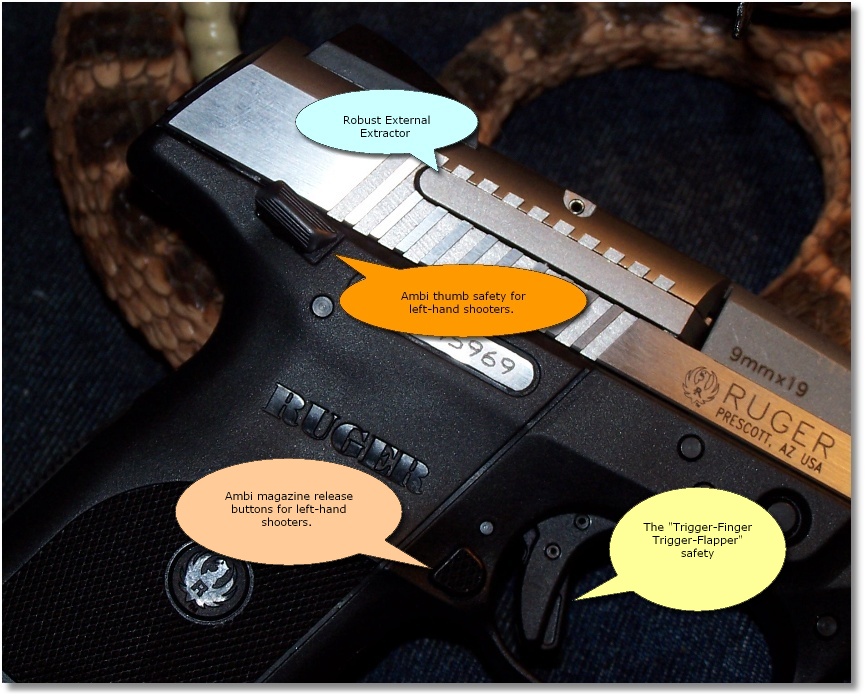 The extractor is of the external type and I have no problem with it as long as it works and, so far, it has worked just fine. The ejection port is wide and relieved and I am relieved as well every time an expended casing is ejected from the firearm and does not bonk me in the head. Even in the confines of an indoor range lane, I experienced no issues when hot cases are ejected from the pistol.
The extractor is of the external type and I have no problem with it as long as it works and, so far, it has worked just fine. The ejection port is wide and relieved and I am relieved as well every time an expended casing is ejected from the firearm and does not bonk me in the head. Even in the confines of an indoor range lane, I experienced no issues when hot cases are ejected from the pistol.
Since I want to tell you about the innards of the pistol, let me break this SR9c down. Excuse me while I talk to myself. Remove the magazine by pressing either the left or right side magazine release button (the magazine release is ambidextrous). Check for a chambered round (nope, none chambered), as indicated by the “chambered round” indicator and a quick view at the rear of the ejector port. Move the slide rearward and engage the slide stop (only on the left side of the pistol). Interject note: The recoil spring is stout but so is the recoil spring on the Glock G36. Ruger created a brand new dual captured recoil spring and guide rod designed specifically for the SR9c to reduce recoil. Some; however, may find the recoil spring a bit “too” stout but it is worth the effort to overcome this spring tension. The slide serrations on the SR9c provide an excellent surface for moving the slide rearward from an overhand or slingshot position. 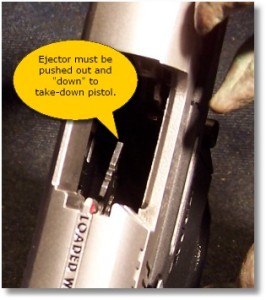 Push the ejector forward and down to clear the slide. Push the slide lock pin out from the right side of the frame. Pull the slide stop pin from the left side of the frame. Grasp the slide firmly as I push the slide lock lever down (also only on the left side of the pistol). Allow the slide to come forward slowly under spring tension and slide the slide off the frame. Set the frame aside, as I will talk about that in a bit.
Push the ejector forward and down to clear the slide. Push the slide lock pin out from the right side of the frame. Pull the slide stop pin from the left side of the frame. Grasp the slide firmly as I push the slide lock lever down (also only on the left side of the pistol). Allow the slide to come forward slowly under spring tension and slide the slide off the frame. Set the frame aside, as I will talk about that in a bit.
Remove the recoil rod assembly from the slide. Simply push the assembly forward slightly and lift it out. The recoil spring and guide rod are a captive assembly not unlike many others of this type of pistol and the guide rod is polymer (the guide rod assembly may be replaced with a stainless steel unit at some time – but not yet). Lift the barrel free from its detent and set it aside.
Looking down at the inside of the slide, I see two button-like looking things. Button-looking things is the technical term for the Striker Blocker and Magazine Disconnect. Using these two buttons and a simple small punch (no, the Glock Tool will not work), I can easily dismember the striker group.
Machine work is excellent and surfaces that are to be smooth are smooth. Edges are well defined, especially where barrel lock-up is demanded. Note that the cocked indicator seen at the rear of the pistol is actually the rear of the striker. Fancy that!
The innards of the frame look complicated but they are actually three assemblies. The assembly that takes the most abuse, the camblock is pinned in three places. The other assemblies (trigger assembly and trigger control group) are comprised of pins, springs, and things that I do not mess with.
Take-down and reassembly of the Ruger SR9c is a very quick and simple task so I should have no excuse for not keeping my SR9c clean. The only trick is to remember to push the ejector to its down position.
After all possible contact points (that I can reach) are lubed, I can assemble the pistol. Again, humor me while I talk to myself. Place the barrel into its detent. Slide the guide rod assembly into the slide and push the heel into place. Ensure that the trigger is forward so that the trigger bars clears the slide. Push the slide onto the frame and lock it in with the slide stop assembly. Insert the take-down pin fully. Grasp the slide with one hand while pushing the slide stop down and allow the slide to slowly come to rest on the frame. Insert an empty magazine into the magazine well to properly position the ejector. Pull the trigger. Pull the slide rearward about .25 inch or so to set the trigger. Pull the trigger. The striker moves forward. Remove the magazine and cycle the slide several times to get the lubricant applied to where it needs to be applied. Insert magazine. Pull the trigger. The striker moves forward and my job is done.
Using the UpLula loader, although it is not needed, I insert 10 rounds in the magazine and insert a loaded magazine into the magazine well with just a little push to ensure a locked magazine as the top round finds resistance pressing against the bottom of the slide. Slide the slide to the rear and let it go – one round chambered as told to me by the chamber-loaded indicator on top of the slide. Set safety to on (up) and the pistol is on safe (the safety lever locks into the slide and a white dot on the frame indicates to me that I now have a safe pistol. Remove the magazine and add one round. Insert a loaded magazine into the magazine well with just a little push to ensure a locked magazine as the top round finds resistance pressing against the bottom of the slide and I now have 11 rounds of Remington 124-grain Ultimate Defense loads at my disposal. Sliding the SR9c into the Cross Breed Super Tuck Deluxe holster, with its rounded and slim profile, the SR9c nestled comfortable against my right hip and slightly compressed the (very) minor jelly roll there that has taken me years to develop.
Some folks have commented on liking and also disliking the finger extension on the 10-round magazine. Luckily, Ruger provides a choice. The 10-round magazine that came with the pistol already had the “pinky extension” installed and I am fine with that. A magazine base without the “pinky extension” is included and the bases can be switched by the user (or a competent gun smith if you leave those things to others). Actually, I am fine with either magazine base as I don’t grip with the little finger. With that said, it is difficult to tell if your are holding a SR9 or SR9c with the magazine sleeve in its rightful place.
The additional magazine (if allowed) is a 17-round affair. A magazine sleeve slips over the magazine to close up the space between the base of the magazine and the bottom of the grip. In all, it affords a full handful of grip and magazine. In short, I do not use the sleeve. I carry two spare 17-round magazines in separate magazine carriers IWB and the slip-over sleeve is incompatible with my mode of carry, as I do not need to worry about if the sleeve is in place or not. I will have more pressing concerns, than magazine sleeves, should my attention be diverted elsewhere – like surviving a gunfight.
The grip, albeit short, fits my hand well. I also own a Glock 36 and a Bersa Thunder Pro 9mm of which the grips seems, well, stumpy. With the standard 10-round magazine with “pinky catch” installed in the pistol, it also affords me a better grip when removing the SR9c from the holster, as my pinky is catching against something and not just hanging out in mid-air. The SR9c, to me at least, feels balanced in the hand with a full compliment of ammunition.
That sounds like range time to me and, by now, you are probably glad I am at this point.
Shooting a compact (and sub-compact) pistol is a challenge in itself. With the short sight radius, and from the first time at the range with this pistol, I found that I had to drift the rear sight slightly right to compensate for the left POI that I experienced. Out of the box, the sights were dead-on for a 6:00 o’clock sighting. The top of the front sight post is approximately .75 inches above the bore axis and
I adjusted the rear sight so that POI was at POA with the (now) red-dot front sight and was where I expected to see a hole appear on the target – if I did my part.
A 100-yard sight-in target was moved out to the 15-yard line; Twice the distance of combat (according to experts). I unloaded the pistol (I had already shot a magazine load at a previous range session with no issues and did not feel it was worth burning my defensive ammo this time around) and inserted a fresh magazine of 124-grain FMJ for practice and further break-in of the pistol.
Chambering a fresh round went smoothly, as expected. Even though the feed ramp on the SR9c is finished very well, I took the liberty of polishing it just a tad. I did not really need to; however, as the recoil spring of the SR9c is more than adequate to get a round home in the chamber. Bringing the pistol up from the ready position, the now red-dotted front sight quickly found its mark. Front sight on target, breath and hold and the trigger finger begins pressing against the trigger flapper (I can’t hep’ myself). The trigger is now free of the frame. The trigger travel is about three-eighths of an inch, and the reset is only about one-quarter inch. That could make for some fast shooting, but that is not why I was here.
The trigger, on this particular SR9c, is about a consistent 5.75 pounds. Some may say that is too much, as the Glock trigger is supposed to break at 5.5 pounds. Some had also complained that they could not tell when the trigger was about to break. Well, personally, I do not want it to break – I want it to release the striker. Once the trigger finger trigger flapper (alright, trigger-safety!) is pressed, I consider the pistol in Condition 0. The remainder of the trigger pull is slightly soft, but I like that. If I do not feel that I am going to make a good shot, I can back off. Once you feel the resistance of the trigger, the distance to the point of striker release is short. Although some would say that the action is mushy, this appeals to me as there is some “back-it-off” time built in should I not decide to shoot. The trigger tension is constant and does not stack. I feel that a near 6-pound trigger is more than adequate for a pistol that would be used in self- defense. A smooth trigger pull feels much lighter than it actually is and the SR9c trigger pull is smooth throughout its stroke. I favor the trigger on the SR9c over the Glock trigger, but that is just my opinion. It does take some getting used to at first, but I have come to like it the more I pull it.
I grip the SR9c high on the back strap, the right thumb high. The support hand thumb resting lightly against the slide take-down assembly and the right pinky intertwined with the support hand fingers. The thumb safety is strong enough not to get pushed back into “safe” by my thumb during recoil; a feature that is handy during competition and battle. Breath in as the pistol is coming to bear. Breathe out and hold when on target. The rest came naturally, the first shot resulted in a hole in the target just above center, and a hair left. I had been through this with the SR9. Since the pistol’s rear sight is screw-adjustable for elevation, I was able to adjust the vertical POI where I desired very quickly. A loosening of the rear sight’s mounting screw, a slight tap of a multi-tool on the rear sight in the direction that I desired, and the POI in the horizontal plane was soon as close to perfect as I could get it. Tighten the sight’s setscrew and I’m back in the game!
I have been experimenting with this pistol and, as with the SR9, I realized that (for me) pulling the trigger with just the pad of my trigger finger did not work with my long fingers. I use my first joint to get a consistent trigger pull. Your hands are no doubt different from mine, but I have found that regardless of what “experts” say, you have to find what works best for you when trying to deliver accurate shots. When my finger goes to the trigger on this gun, it is to the first joint and it is the position that I begin pulling. I may not have time in a defensive situation to figure out where to place the finger on the trigger so will work with my “natural” position. With a 1911, it is usually the pad of the trigger finger that gets the call. With the SR9c, it is the first joint. Take what you got and work with it. Even with the first joint position, I still have space between the trigger finger and the frame and it seems to work for me.
The SR9c is a pleasure to shoot and the more I shoot it the more I like it. Subsequent rounds fired off without a hitch. I had a few fliers, but that is my normal habit, it seems.
By the end of the session, the SR9c adequately delivered the mail. Some went to addresses I had not planned on but deliveries are final and there are no returns. I ran a bore-snake through the SR9c and wiped it down – it would get a thorough cleaning later. I was satisfied with the session overall, but I am only as good as my next range session.
I signed out, paid my range tab, and went to the car. The SR9c was reloaded with defense loads and once again was nestled nicely in the CBST. Like the SR9, this is quite a fine pistol. Usually I have something that I want changed on a handgun to make it personal to me. With the exception of the front sight that I had painted (as I did with the SR9) due to my old eyes, I could not think of a thing to change – and I felt good about that. I would have preferred that Ruger did not include front slide serrations, but it is not a showstopper in my book.
To summarize, I have carried a number of handguns from Beretta, Sig Sauer, Ruger, Glock, Springfield XD, Bersa, and a few 1911s. All have been reliable, dependable firearms. When I began thinking, which hurts most of the time, of what handgun that I wanted to carry during the hot Georgia summer, the SR9c tops the list for compact carry. It is proven itself in the short time that I have had it and Ruger did it right. You may think the same way, if you give the SR9c a chance and if you are not yet sold on one, Hickock45 has several videos; one of which is @ http://www.youtube.com/watch?v=zT1q1C_PnIY.
UPDATE 03/16/2014
 Round 2 at the range with the SR9c today. The SR9c performed without a hitch.
Round 2 at the range with the SR9c today. The SR9c performed without a hitch.
The first time out with the SR9c was not up to my usual standards for me, although the pistol performed well. The short sight radius of the SR9c plays havoc on my old vision, which needs to be examined once again, but the pistol held its own through 150 bullets of Federal 115-grain FMJ out the tube at 15 yards. The first 100 rounds was as well aimed off-hand as I could get them with a few fliers trying to get used to a trigger that is really quite good. The remaining 50 rounds were snap-shots; one shot each from the ready to the shooting position while trying to hit center as closely as I could. By the end of the session, and except for the fliers, I was quite pleased with the SR9c.
The Ruger SR9c is an excellent point-n-click interface and with this pistol the bullet impacts where the barrel is pointed – period.
With any compact or sub-compact pistol, the most difficult part of working with them is keeping the muzzle in line at all times. Any slight variance while pulling the trigger will cause the barrel to go out of sight alignment real quick. To overcome this take practice and it will be something that I need to work on if I expect to clean up those fliers.
Now, about those front serrations on the slide that I felt were useless in my original write-up. I found them quite useful in pulling and releasing the slide, as they allowed me to get a full grip on the slide while keeping the muzzle pointed down-range during the chambering process with the slingshot method. The rear serrations afford me a very good grip on the slide using the overhand method of chambering a round.
UPDATE JULY 25, 2019
A while back, I had noticed that Ruger had dropped the SR line (with teh exception of the SR22) from it on-line product catalog. While perusing the Ruger website recently; however, I found the Ruger SR family of pistols are listed once again. I thought that they had been discontinued. They are available through Sports South, LLC., which is a distributor, and apparently you have to be a dealer.
The SR family of pistols, which includes the SR9, SR9c, SR40, SR40c, and SR45 are excellent. I have the SR9, the SR9c, and SR45 (the family was pulled by Ruger before I could get to the SR40/SR40c). All have excellent triggers and were highly reliable. They do have; however four quirks: the magazine disconnect, a funky thumb safety, pushing the ejector down to remove the slide, and dry-firing a SR series pistol without a magazine, which may result in damage or unnecessary wear to the magazine disconnect mechanism and/or striker. Other than that, they are fine pistols.
The SR9 is good for 17+1 rounds, The SR9c holds 10+1, The SR40 is good for 15+1, the SR40c holds 15+1, and the SR45 holds 10+1.
If I didn’t have the Springfield XDm40 4.5, I would invest in the SR40. They are available through Cabela’s and other dealers like grabagun.com.
![]()


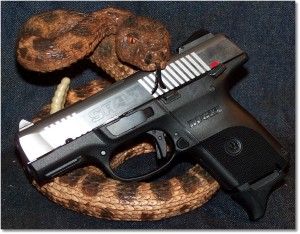

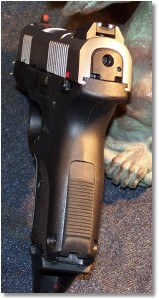
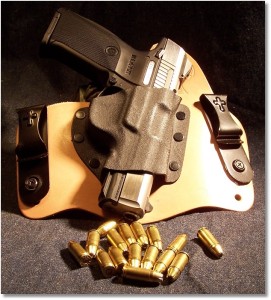


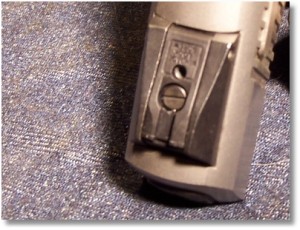
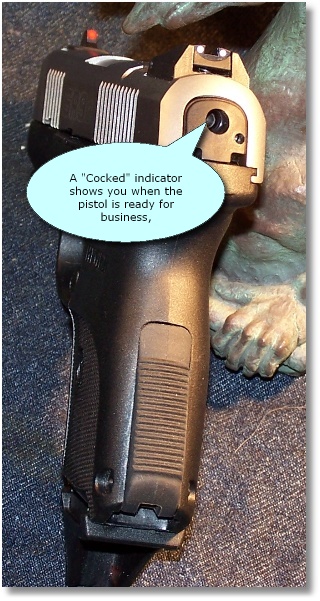
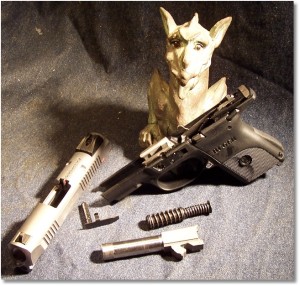
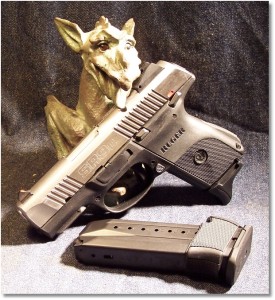
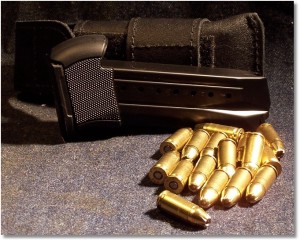
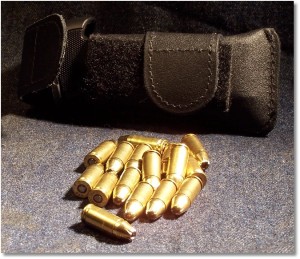
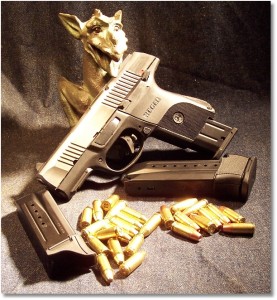
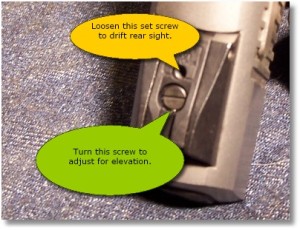
2 Responses to Ruger SR9c – A User Viewpoint